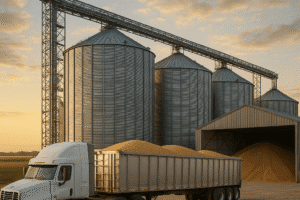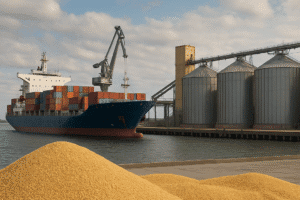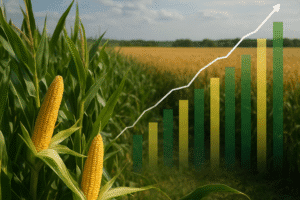The global grain market stands as a pivotal arena where policy decisions reverberate across continents, influencing everything from local food security to international trade balances. As governments manoeuvre between protection of domestic producers and ensuring affordable supplies for consumers, the interplay of regulatory frameworks, fiscal measures, and geopolitical alliances determines the trajectory of commodity prices. This article delves into the key mechanisms through which trade policies steer global grain valuations, exploring historical precedents, contemporary challenges, and emerging trends.
Impact of Tariffs and Quotas on Grain Trade
Export and import barriers remain among the most direct tools for governments seeking to shield domestic producers or stabilize local markets. By adjusting the cost of cross-border transactions, states can modulate the flow of cereals, oilseeds, and pulses, thereby affecting global price signals.
Tariff Structures and Market Entry
- Flat ad valorem duties: Commonly applied as a percentage of the export or import value, these levies can create predictable hurdles for traders, influencing long-term contracts and hedging strategies.
- Specific tariffs: Imposed as a fixed fee per ton or bushel, they introduce a disproportionate burden on lower-value shipments, often discouraging small-scale exporters in developing countries.
- Tiered rates: Varying duties based on product quality, origin, or end-use can result in complex compliance requirements, affecting supply chains and fostering administrative delays.
By altering the effective price received by sellers or paid by buyers, tariffs not only shift domestic consumption patterns but also feed into the wider network of global benchmark quotations. Import duties in major consumer markets may deter purchases, driving surplus stocks toward alternative destinations and creating price spreads between regional hubs.
Quota Regimes and Import Licensing
Absolute quantity restrictions, often enforced through licensing systems, set rigid caps on grain inflows. While they can offer abrupt relief from price spikes in domestic arenas, they tend to distort international trade flows, resulting in:
- Black‐market premium: When legal supplies are insufficient, unofficial channels emerge, pushing local prices significantly above international levels.
- Administrative allocation: Quotas often favour state‐affiliated or politically connected importers, undermining market transparency and competition.
- Transit diversions: Traders reroute shipments through neighbouring nations with more lenient controls, adding time and cost.
These distortions can amplify volatility as supply bottlenecks develop, especially in times of poor harvests or surging global demand.
Role of Subsidies and Domestic Supports
Beyond border measures, internal policy instruments such as direct payments, output bonuses, and price supports play a crucial role in shaping production incentives and export competitiveness. By altering the effective cost of cultivating staple grains, governments can influence the global supply curve.
Income Transfers and Direct Payments
Many advanced economies utilize decoupled payments to stabilize farm incomes irrespective of actual output levels. While designed to meet international trade rules by minimizing production bias, these transfers still carry significant market effects:
- Production security: Cushioning against price drops encourages farmers to maintain or expand planted areas, especially for grains with established processing industries.
- Competitive edge: Even non‐conditional subsidies can lower average production costs, enabling exporters to offer more attractive prices internationally.
- Budgetary burden: Sustained fiscal support can strain public finances, prompting debates on the long‐term viability of high subsidy levels.
Price Floors and Market Interventions
Guaranteed minimum prices and state‐led procurement programs directly set domestic price floors. While they protect producers, they also contribute to:
- Accumulating stockpiles: Governments purchase surplus grain, incurring storage and quality management expenses.
- Export dump: Offloading excessive reserves on world markets at subsidized rates depresses prices globally, affecting producers in unsubsidized regions.
- Trade disputes: Persistent export subsidies can trigger retaliatory measures and litigation through institutions like the World Trade Organization.
By tilting the balance in favour of higher shipments, these mechanisms intensify the interdependence between national policies and international price dynamics.
International Agreements and Market Liberalization
Multilateral treaties and regional trade pacts aim to reduce friction in grain commerce, promoting a more efficient allocation of resources and lowering price disparities across borders. Yet the path to comprehensive liberalization is often fraught with political sensitivities and distributional concerns.
World Trade Organization Framework
Under WTO disciplines, member states commit to binding tariff maxima and constraining certain export subsidies. Key provisions include:
- Tariff bindings: Legal ceilings on import duties foster predictability for exporters seeking stable market access.
- Subsidy reduction commitments: Limits on the total value and volume of export‐based supports curb market distortion.
- Dispute settlement mechanism: A structured process for adjudicating conflicts over alleged policy breaches, promoting compliance and market integrity.
While adherence to these rules has led to lower average duty levels in many consumer regions, carve‐outs for sensitive products and special safeguards maintain room for protective interventions.
Regional Trade Agreements
Customs unions, free trade areas, and preferential agreements often go beyond WTO floors, offering deeper tariff cuts and simplified regulatory alignment:
- Mutual tariff elimination: Member countries remove duties on most grains, boosting intra‐bloc shipments and market integration.
- Harmonized phytosanitary standards: Unified plant health requirements reduce inspection delays and compliance costs.
- Rules of origin simplification: Clear criteria on the origin of goods facilitate supply chain planning and foster regional value chains.
However, overlapping pacts and diverging external tariff schedules can create a “spaghetti bowl” effect, complicating traders’ navigation of preferential margins.
Emerging Trends and Policy Innovations
The global grain market continues to evolve under the influence of climate change, digitalization, and shifting consumer preferences. Forward‐looking policies seek to balance short‐term stability with long‐term resilience.
Environmental Incentives and Carbon Pricing
Some governments are exploring the integration of sustainability metrics into agricultural policy, including:
- Carbon border adjustments: Levies on imported grains to account for embodied greenhouse gas emissions, encouraging producers to adopt low‐carbon practices.
- Payment for ecosystem services: Rewards for farmers who maintain soil health, biodiversity, and water conservation, indirectly shaping global supply dynamics.
- Green procurement mandates: Public purchasing preferences for sustainably grown cereals, influencing market standards and international trade expectations.
Digital Platforms and Market Transparency
Advances in data analytics, blockchain tracking, and online trading venues are fostering greater transparency and efficiency:
- Real‐time price discovery: Digital exchanges aggregate bids and offers from around the world, reducing information asymmetry.
- Traceability solutions: Immutable records of grain origin and handling build trust among buyers, mitigating risks of fraud.
- Automated compliance: Smart contracts enforce tariff and quota limits instantaneously, streamlining cross‐border logistics.
Risk Management and Financial Instruments
The proliferation of derivative products and risk pooling arrangements equips producers and traders with tools to hedge against unpredictable swings in supply and demand:
- Futures and options contracts: Standardized instruments traded on commodity exchanges allow stakeholders to lock in prices ahead of harvests.
- Weather derivatives: Payouts linked to rainfall patterns or temperature indices help mitigate climate‐related yield fluctuations.
- Index‐based insurance: Parametric coverage triggered by objective benchmarks accelerates payouts and reduces administrative costs.
By integrating these innovations with coherent trade policies, market participants can better navigate the complex tapestry of global grain commerce, balancing the imperatives of affordability, equity, and environmental stewardship.













